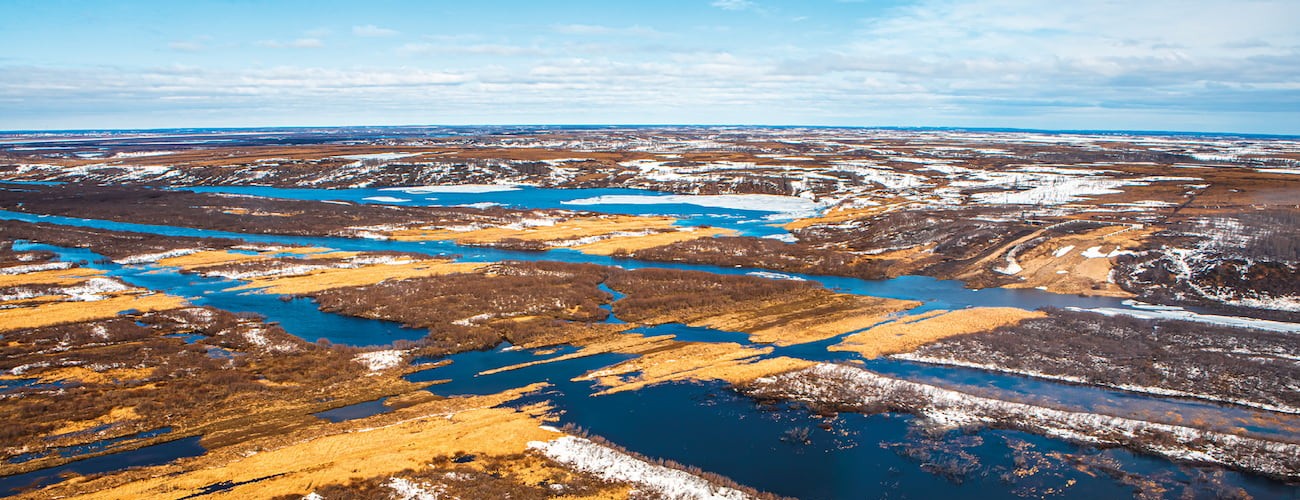Waste and tailings storage facilities
Sustainable waste management
Nornickel’s safe waste management is aligned with the key aspects of the public policy in this area. The 2031 Environmental and Climate Change Strategy outlines the Company’s waste management priorities, from regulatory compliance of waste disposal facilities in Russia to expanding the proportion of recycled waste across categories.
The Company’s waste management complies with applicable Russian laws. Nornickel maintains records of waste generated, treated, recovered, neutralised, transferred to, or received from third parties, and disposed of; these records are aggregated on a quarterly and annual basis.
The Company monitors waste management throughout its entire life cycle, including the management of waste by third parties. Contracts for further waste management are made with third parties possessing all necessary permits, licences, state expert reviews, technical regulations, and specifications.
Contractors undertake to abide by environmental standards established both by the government and the Company. A relevant internal document provides for ongoing contractor monitoring and the imposition of sanctions for violations of environmental requirements and environmental damage.

Waste classification
Nornickel’s operations generate hazard class 1–5 waste.
| Hazard class | Waste generation, t | Share of total waste generation, % | Description | ||
|---|---|---|---|---|---|
| 2023 | 2024 | 2023 | 2024 | ||
| Hazard class 1 | 20.4 | 14.2 | 0.00001 | 0.00001 | Hazard class 1–2 (highly hazardous) waste includes mercury lamps and thermometers, batteries, acids and alkalis used in batteries, uninterruptible power supplies, and oils. As required by Russian laws, Nornickel transfers highly hazardous waste to a federal operator by signing an agreement in the federal state information system |
| Hazard class 2 | 47.2 | 67.6 | 0.00003 | 0.00004 | |
| Hazard class 3 | 8,018.6 | 6,941.2 | 0.0045 | 0.004 | Waste associated with production or other economic activities, or coming from materials and products that have lost their consumer properties after having been used according to their intended purpose |
| Hazard class 3 | 1,595,458.0 | 1,154,176.8 | 0.9 | 0.7 | Close to 97% of hazard class 4–5 waste is generated by mining and concentration operations (overburden, host rock, and tailings). In 2024, mining and concentration hazard class 4 waste stood at 687.8 kt (all of it tailings), while class 5 waste totalled 168.4 mln t (including 30.7 mln t of tailings and 137.7 mln t of overburden) |
| Hazard class 5 | 175,290,849.8 | 173,082,348.0 | 99.1 | 99.3 | |
| Total | 176,894,394.1 | 174,243,547.8 | 100.0 | 100.0 | |
No significant year‑on‑year changes in waste generation were recorded in 2024.
Contribution to combating contamination with waste
The Company fosters non‑waste production by developing and implementing mineral waste recycling approaches while making efforts to clean up existing pollution.
| Initiatives | Expected effect | Results for 2024 |
|---|---|---|
| Building a crushing unit for processing construction waste into certified crushed stone | 15% of construction waste generated by the Company will be recovered | 64.88 kt of construction waste was recovered |
| Constructing a ferrous scrap recycling shop | Ferrous scrap processing capacity will be 100 ktpa | The project was suspended due to reallocation of the Company’s budget |
| Building a non‑ferrous scrap recycling shop | Non‑ferrous scrap recycling capacity will reach 2 ktpa | The project was suspended due to reallocation of the Company’s budget |
| Organising temporary waste storage and management sites at the Kola site’s metals and mining enterprise in line with applicable Russian laws | Share of non‑mineral waste recycling (other than gypsum and cake waste) at the Kola site’s metals and mining enterprise is expected to reach 60% by 2031 | Share of non‑mineral waste recycling (other than gypsum and cake waste) at the Kola site’s metals and mining enterprise reached close to 75%. The enterprise is exploring options for the recycling of ferrous cake |
| Processing large tyres and rubber products into crumb rubber / pyrolysis fuel | All of the Company’s rubber products waste will be recycled | Preparation of design documents |
| A waste sorting project | – | Bins for plastic, glass, and paper waste were installed |
Figures may not fully add up due to rounding.)
In 2024, onsite waste disposal decreased 10.7% y‑o‑y to 26.7 mln t.
Clean Norilsk programme
Clean Norilsk is Nornickel’s large‑scale programme aimed at removing industrial and construction waste, improving public amenities in the Norilsk Industrial District and the Arctic zone, and restoring previously and currently used land in accordance with environmental, sanitary, and epidemiological standards.
The Clean Norilsk programme was launched in 2021. The programme is scheduled to span ten years and will be implemented in multiple phases, each involving a set of waste disposal activities. The Company plans to invest over RUB 40 billion in the programme, with RUB 15 billion spent on related activities in 2021–2024.
In 2024, technical and biological rehabilitation activities were completed on 4.1 ha of disturbed land as part of the programme.
Clean Norilsk targets through 2030 and 2021–2024 actuals
Waste disposal
Nornickel takes a responsible approach to tailings management, with a strong focus on ensuring their operational safety. To mitigate environmental and industrial safety risks, the Company regularly monitors the condition of hydraulic structures and inspects discharge sites as well as adjacent areas.
The Company has in place PJSC MMC Norilsk Nickel’s Tailings Management Policy. In 2024, the Company developed the Corporate Standard for Operation of Hydraulic Structures of Tailings Storage Facilities, which reflects its overall approach to tailings storage facility management. The standard is planned to be implemented before the end of 2025.
The Company’s tailings storage facilities
Our tailings storage facilities comply with Russian laws and have all permits along with design and expert documentation in place for the commencement of construction and operation.
Operation of each tailings storage facility is subject to mandatory compliance with safety criteria, developed specifically for each facility and approved by regulators. Once every five years, an expert agency accredited by Rostechnadzor conducts detailed inspections of hydraulic structures. The expert agency that issues an industrial safety declaration for the relevant facilities upon which Rostechnadzor carries out a due diligence. At least once every five years, as part of the safety declaration process, the Company collaborates with Russia’s EMERCOM to conduct comprehensive drills aimed at verifying preparedness for emergency containment and response at hydraulic structures, resulting in the issuance of a formal opinion.
Safety monitoring of tailings storage facilities
Every facility of the Company has a safety monitoring system for tailings storage facilities, which encompasses internal operational control and environmental monitoring.
The Company has in place a safety monitoring protocol for the hydraulic structures of each tailings storage facility, defining the scope (type) and timeframes of such monitoring. Daily visual monitoring over the technical condition of hydraulic structures is the responsibility of operators, while instrumental measurements (surveying, environmental, and hydrogeological control, etc.) are performed in line with the monitoring protocol timelines.
In 2024, the Company continued designing an automated monitoring solution for hydraulic structures at three tailings storage facilities in the Norilsk Industrial District. The design solutions are expected to be fully implemented by the end of 2025.
As part of creating a security operations centre for the Kola site’s metals and mining enterprise, a roadmap was developed in 2024 for the digitisation of the local tailings storage facility in 2024–2025. According to the roadmap, the following activities were carried out:
- Provision of equipment for monitoring meteorological conditions and automated water level measurements (two weather stations and a hydrological complex)
- Testing of drones equipped with payloads for geodetic monitoring and visual inspection of the condition of hydraulic structures, including process pipelines
- Testing of remote sensing technology for geodetic monitoring purposes
Based on the results of geotechnical surveys, an independent expert review of the stability of the containment dams is carried out by specialised organisations accredited by the Federal Environmental, Industrial, and Nuclear Supervision Service of Russia (Rostechnadzor). This review is conducted when developing safety declarations for hydraulic structures, designing and overseeing monitoring systems, and performing other activities to ensure the safe operation of the storage facilities. All hydraulic structures of the Company are subject to ongoing comprehensive monitoring for industrial safety.
Assessment of tailings storage facility risks
There are two processes in place to assess the Company’s tailing storage facility risks:
- Estimates of potential damage to life and health of individuals, and to property of individuals and legal entities as a result of an emergency at a hydraulic structure. The estimates of potential damage are prepared at least once every five years, when developing a safety declaration for the hydraulic structure
- Assessment of technical and production risks carried out in line with the Procedure for Managing Technical, Production, and Environmental Risks of MMC Norilsk Nickel and Russian business units of the Nornickel Group
The Company registers tailings storage facilities, determines the timeframes for their decommissioning, and estimates the future closure and land rehabilitation costs. The Company uses the resulting data to calculate the present (discounted) value of future costs, recognising its environmental provision with respect to the tailings storage facilities.
Preparedness to respond to accidents and emergencies
All tailings storage facilities used by the Company are situated at a considerable distance from production sites and human settlements. Due to the fact that tailings storage facilities have an increased risk of negative environmental impact, local communities, and infrastructure facilities, the Company annually develops emergency response plans (ERPs) for hydraulic structures, separately for each tailings storage facility. Such plans include:
- operational section: a list of potential accidents at the hydraulic structure and a response system detailing the measures to be taken and the persons responsible for their implementation
- emergency communication protocols and diagrams for both operating personnel and relevant local authorities, as well as for informing the wider public about the nature, scale, and potential consequences of the accident
- material and financial reserves maintained by the Company to ensure a prompt response to any damage, accident, or emergency at the tailings storage facility’s hydraulic structure
- allocation of responsibilities among all parties involved in accident response and containment, along with a defined course of action
- evacuation plans and maps for personnel and equipment in the event of an accident at the hydraulic structure
- a schedule of emergency drills covering the key elements of the emergency response plan’s operational section, conducted with the involvement of operating personnel. Such drills are conducted at least once every two years, with corresponding reports prepared following each exercise.
